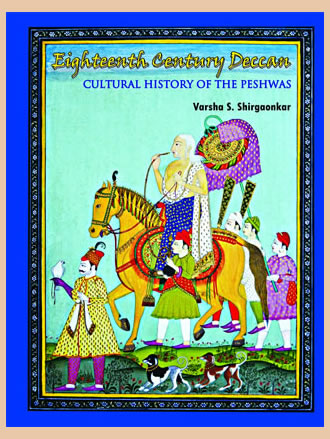EIGHTEENTH CENTURY DECCAN: Cultural History of the Peshwas
EIGHTEENTH CENTURY DECCAN: Cultural History of the Peshwas is backordered and will ship as soon as it is back in stock.
Couldn't load pickup availability
Genuine Products Guarantee
Genuine Products Guarantee
We guarantee 100% genuine products, and if proven otherwise, we will compensate you with 10 times the product's cost.
Delivery and Shipping
Delivery and Shipping
Products are generally ready for dispatch within 1 day and typically reach you in 3 to 5 days.
- Total Pages: xxx + 178
- Format: HB (Hardback)
- ISBN: 9788173053917
- Edition: 1st
- Publisher: Aryan Books International
- Book Size: 22 cm x 28 cm
- Year of Publication: 2010
Presently, one of the prominent debates in Indian History remains the eighteenth century period that revolves around the relationship between political stability and culture. Eighteenth century marked a significant stage in the Maratha history since in this century the Maratha rule expanded in North India and Karnataka. This century also witnessed an important position granted to the post of the Peshwa, as seen from the sanad of Maratha king Chhatrapati Shahu in the name of Peshwa, bestowing upon him total administrative authority. The political connections with the new provinces outside Maharashtra brought with them the streams of a new culture to the Deccan. Historical records reflect upon the intention of the Peshwas and their sardars to create the prototype especially of the culture of North India. Various dimensions of new culture such as Persian language, luxurious items, music and dance entered the Deccan and blended with its prevalent cultural characteristics. The eighteenth century, towards its close, also witnessed the entry of European culture into the Deccan. The book shows how cultural dynamism was operative in the eighteenth century Deccan with special reference to the Peshwa period. The downfall of Maratha Empire took place in 1818 and hence the discussion in the book goes beyond the eighteenth century. In conclusion, the book takes a stand that culture thrives in spite of political instability and that it migrates in search of patronage. When culture settles in the new patron house, its blend with the local trend is inevitable and thus the process paves the way for a composite culture. The book will interest researchers of the cultural history of India.





